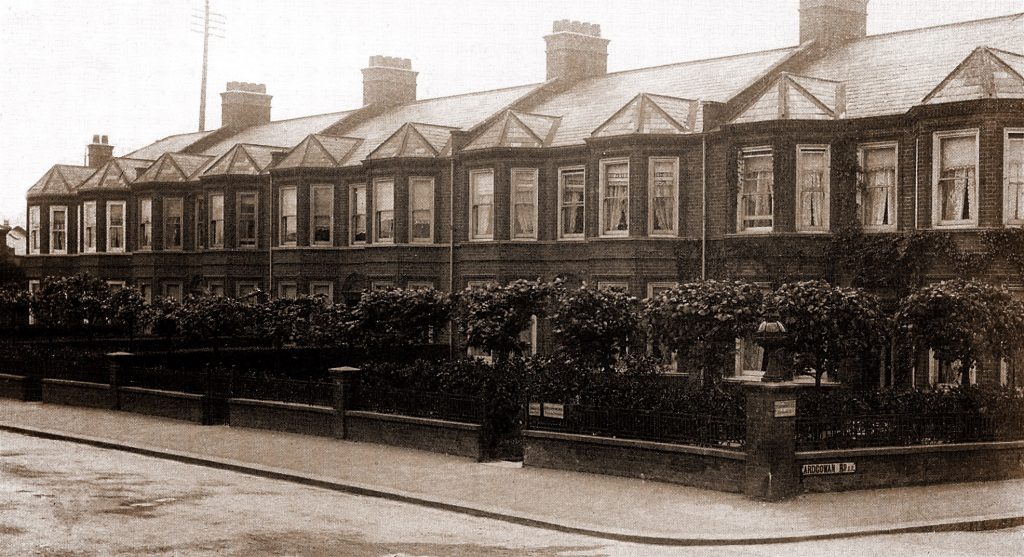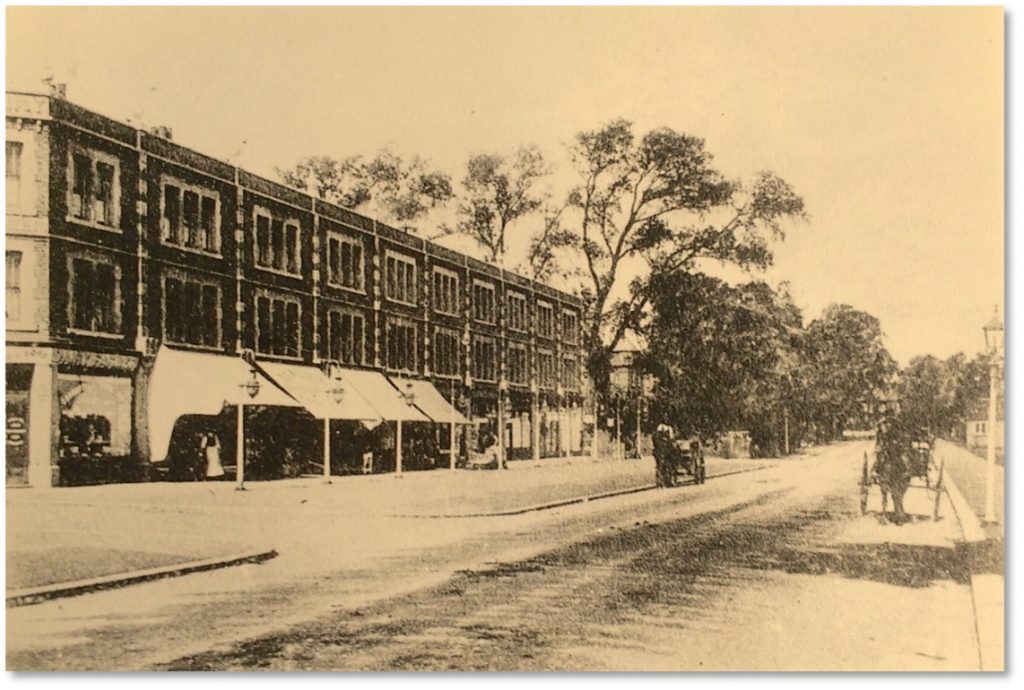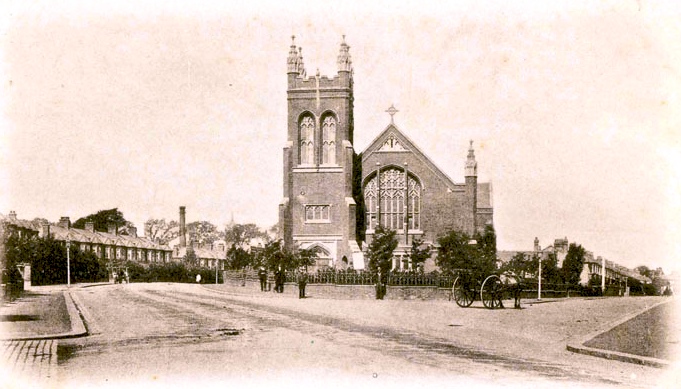“An Ancient Right of Way”
Background
Hither Green Lane is the oldest road on the Corbett Estate and appears on the earliest maps of the area. It is an ancient right of way which runs from a mile north east of Rushey Green in the valley of the river Ravensbourne, up over a low ridge to Hither Green and down again to join a branch of the river Quaggy at Further Green. Until the late 19th century it ran through green fields, and the section to the south of Brownhill Road was renamed Verdant Lane in 1907.
Although it’s one of the longest roads in the area, only a small stretch of Hither Green Lane was actually developed as part of the St German’s Estate, i.e. the area to the south-east of the former Park Hospital (which opened in 1897 as a fever hospital in what was then a much more rural setting). The Corbett Estates company used a substantial area opposite the hospital grounds to house a Steam Joinery, where the wood for building the houses was prepared. The sales agent for the Estate (Mr Robert Pettigrew) lived in Eliot Lodge, on the corner of Hither Green Lane and Duncrievie Road, which is now one of the oldest houses in Hither Green.

1 to 5 Ardgowan Gardens, now 294 to 302 Hither Green Lane, built c. 1897
At the time of the 1911 census, there were 63 houses in this part of Hither Green Lane with 289 occupants. The houses include some of the very earliest that Corbett built on the Estate, starting in 1896, and some of the last, such as those built in 1910 on a patch of land at the corner of Hither Green Lane and Brownhill Road. The latter were built on the site of a pear orchard and one of the original trees still stands in the back garden at No. 328. The size of the houses varied from large double-fronted houses with four bedrooms each to smaller terraced ones with three bedrooms. The larger houses have keystones above the doorways which are characteristic of the Estate, but the smaller terraced houses do not, although some have small balconies above the front doors with attractive Art Nouveau-style cast iron details.
There were seven parades of shops built on the estate, one of which was the Central Market at Nos 246 to 274 Hither Green Lane. These were built in 1905 and whilst many of the shops are still operating, their wares have changed considerably over time.

Central Market parade on Hither Green Lane, c.1910
The Early Residents: details from the 1911 Census
With an average of 4.6 people living in each house, this road had a typical rate of occupancy for the Estate: the largest number of people recorded as living in a single house on Hither Green Lane was nine, compared with the maximum of 13 on the whole estate. Six houses accommodated two households, something which was not uncommon in the area: usually one family lived upstairs and one downstairs, but without the structural alterations that separate flats today. Seven of the 58 Heads of Household were women, which at 10 percent is around average for the estate. There were only two lodgers, and 20 houses had live-in servants.
The census reveals that 64% of people living here were born within the area which we now define as Greater London. Two residents were born in unusual places: Theodosia Goodwin of No. 280 was born at sea and Frances Dawson at No. 343 in Peking, China. The oldest person was John Simpson, a widower aged 82, who lived at No. 324.
The most unusual surname in the street belongs to Mr Francis Bulkley-Bing, who was a musician born in Dublin. One family was named Corbett, but they were not related to the developer, Archibald Cameron Corbett. Head of Household Matthew Corbett was a baker who was born in Camberwell in 1861.
Many people on the street were employed as clerks or servants, or worked in tailoring, dressmaking and millinery. A multitude of Clerks worked in banking, insurance, shipping, shops, manufacturing and on the railway. There were a few professional people (engineers, a company secretary, a schoolmaster, a musician and a draughtsman) and various tradespeople (cook, electrician, carpenter, dressmaker, milliner, dairy man and paper hanger). Unusual occupations include a Tin Rose Manufacturer and a Golf Ball Coverer.
A lost church

The Wesleyan Methodist Church at the corner of Wellmeadow Road, destroyed in World War 2
Hither Green Lane used to have its own Wesleyan Methodist Church with a large Sunday school hall behind it. This was an impressive building on the corner of Wellmeadow Road, for which the foundation stone had been laid in 1899. Sadly, it was hit by an incendiary bomb on the night of 11-12 September 1940 and most of the church and much of the hall were destroyed or badly damaged. The blast also affected a large number of houses in the area. The site was not cleared until the 1960s, when a block of flats was built in its place.